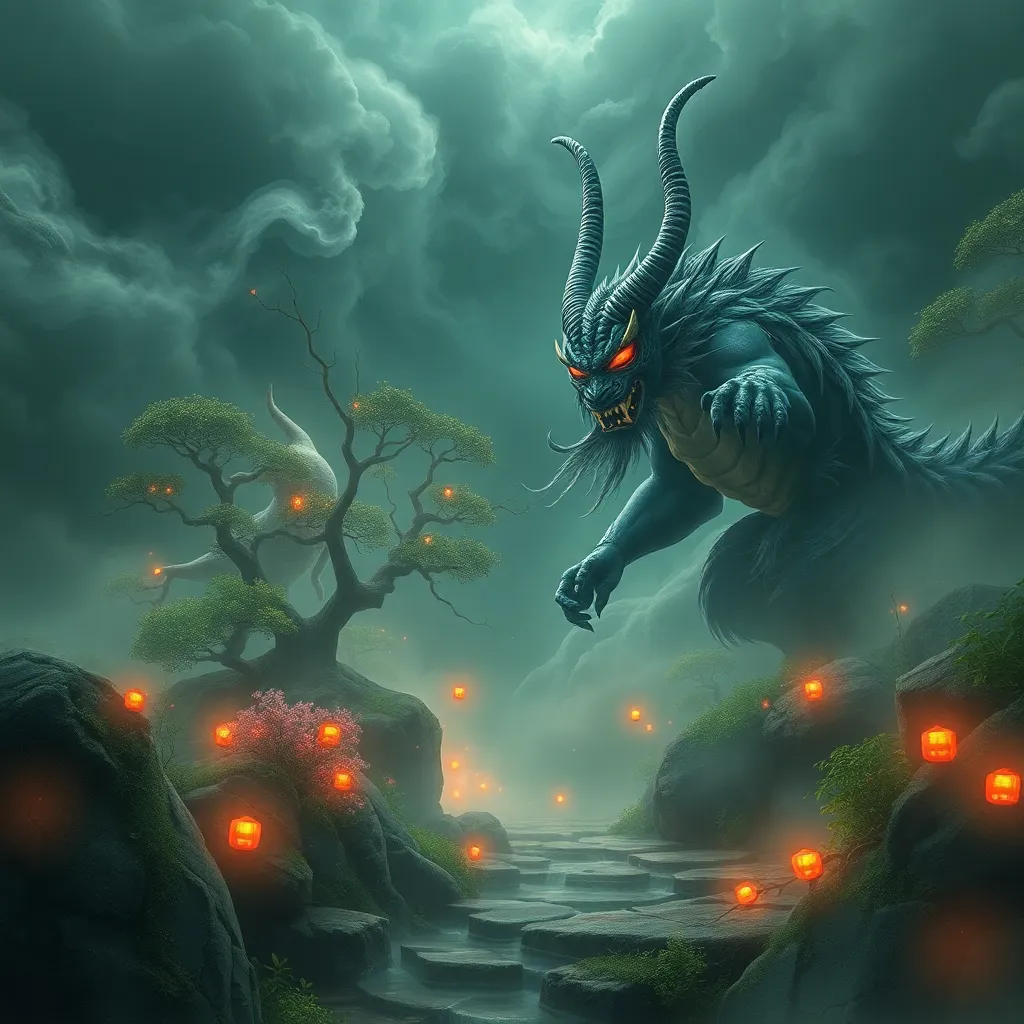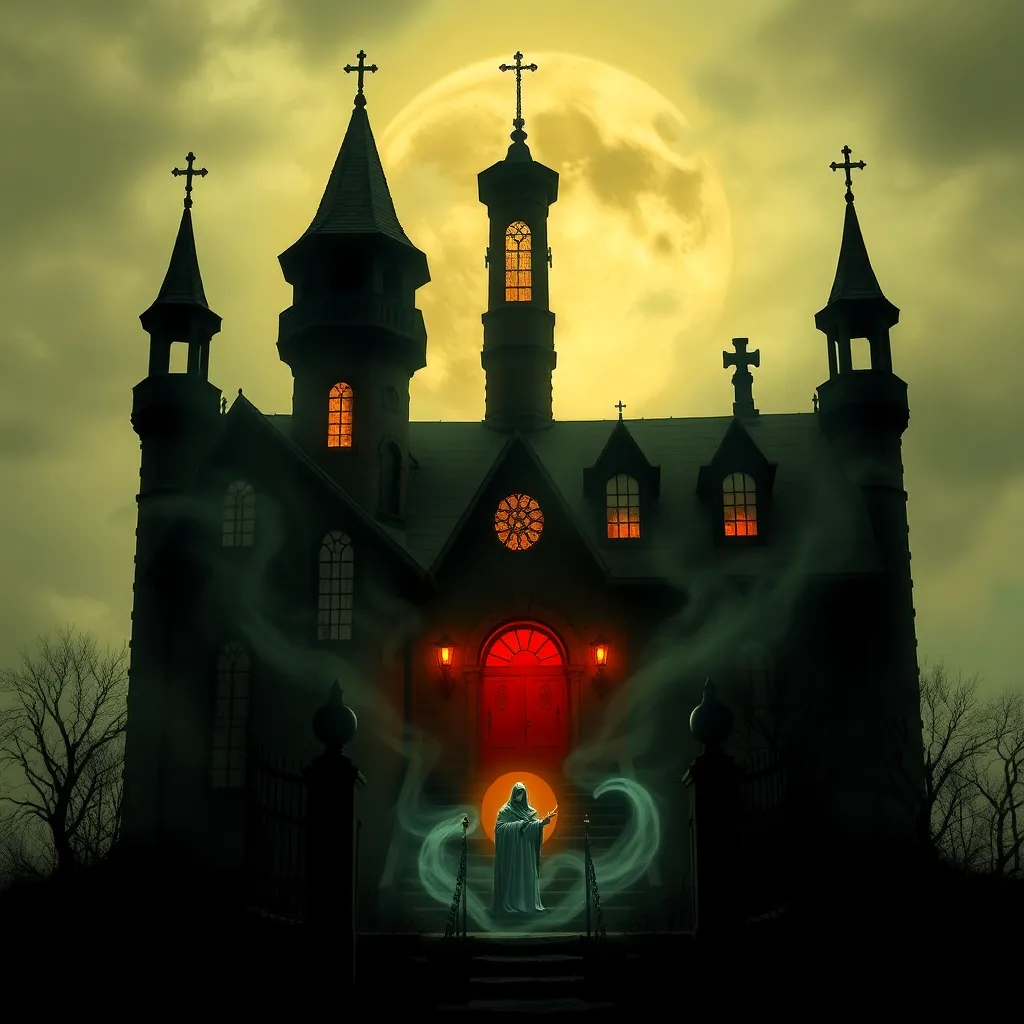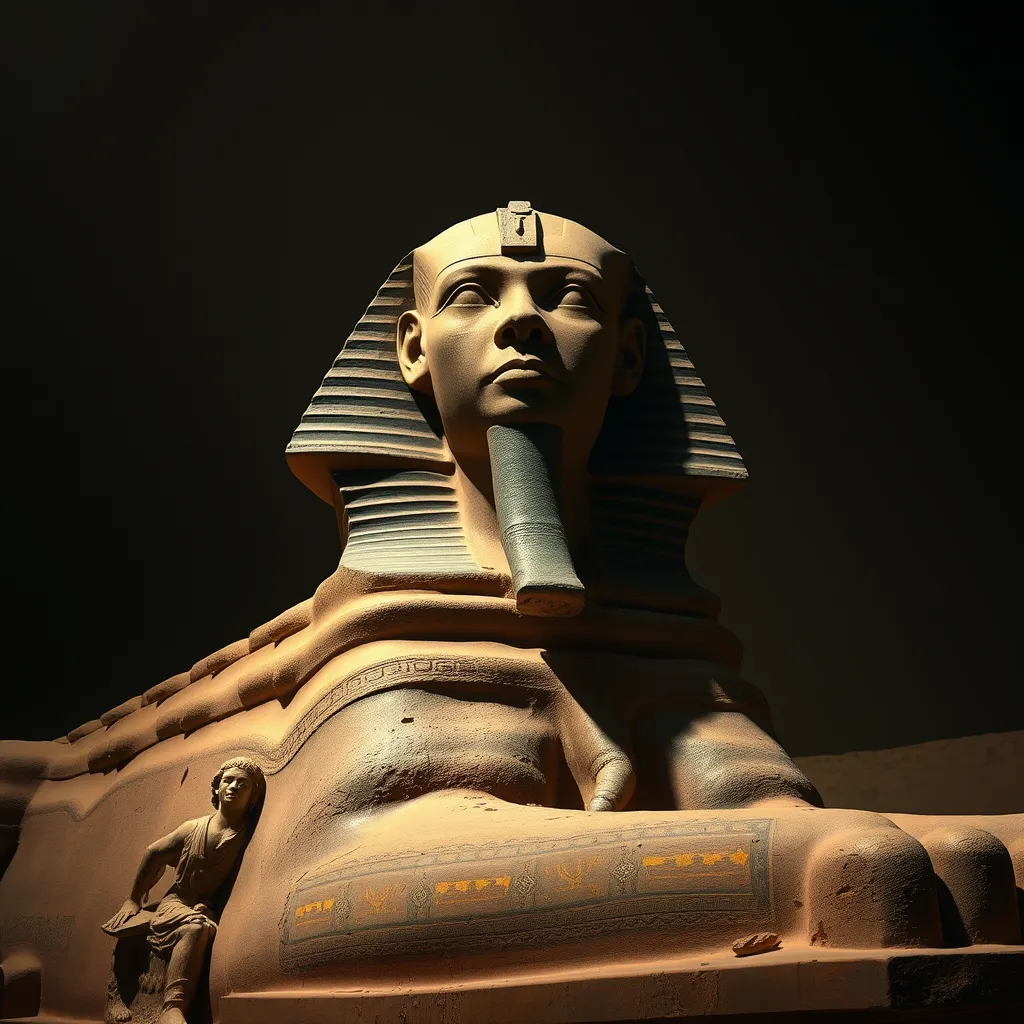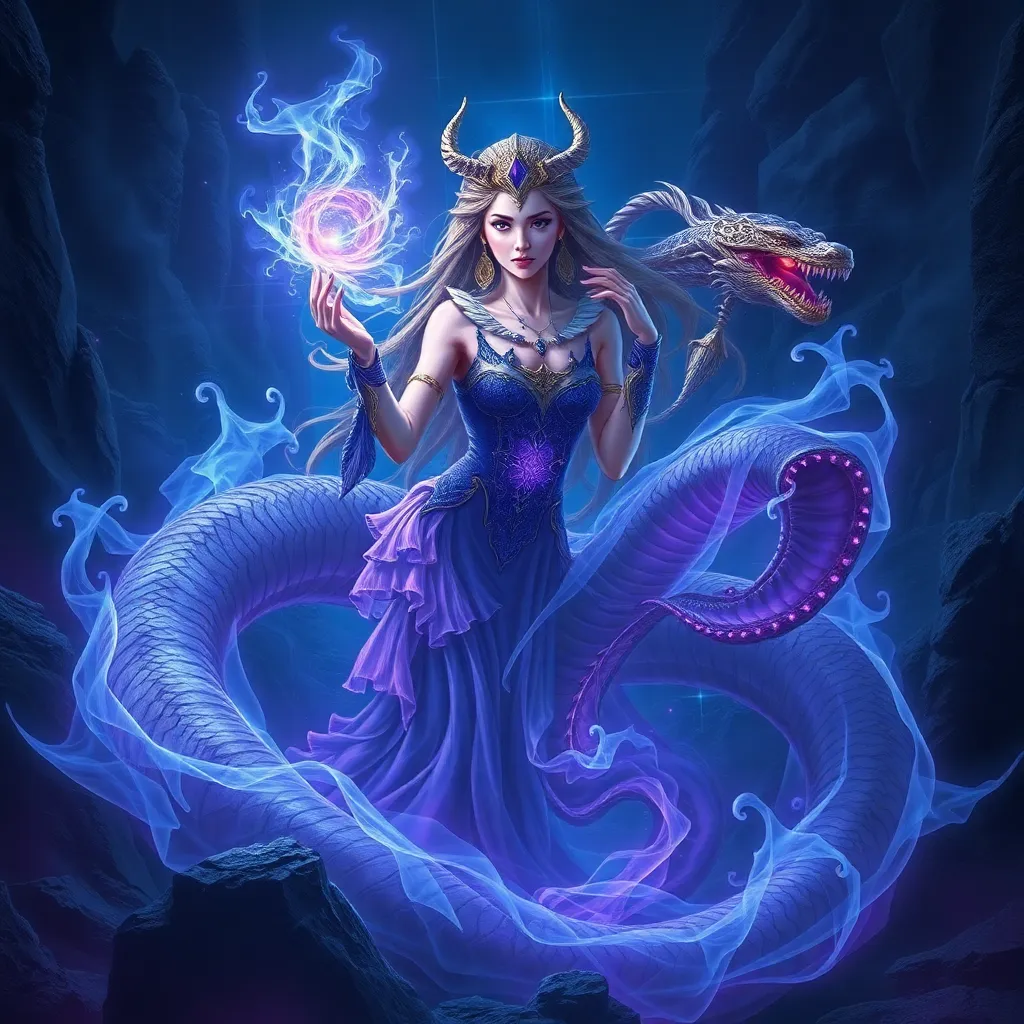The Oni’s Garden: Exploring the Landscape of Oni Legends in Japanese Literature
I. Introduction
The Oni, a prominent figure in Japanese folklore, represents a complex blend of good and evil that has fascinated audiences for centuries. These mythical creatures are often depicted as ogre-like demons, characterized by their fierce appearance and supernatural abilities. Yet, beneath this fearsome facade lies a rich tapestry of cultural narratives that reflect the values, fears, and beliefs of Japanese society.
In this article, we will delve into the significance of Oni in Japanese literature, exploring their origins, evolution, and the multifaceted characteristics that make them compelling figures in storytelling. Through this exploration, we aim to uncover the deeper meanings behind Oni legends and their enduring impact on both historical and modern narratives.
II. Historical Context of Oni Legends
A. Origins of Oni in ancient Japan
The concept of Oni can be traced back to ancient Japan, where they were likely influenced by various cultural and religious beliefs, including those from Shintoism and Buddhism. Early references to Oni can be found in texts such as the “Nihon Shoki” (Chronicles of Japan), where they were depicted as malevolent spirits associated with calamities and misfortunes.
B. Evolution of Oni depictions through different eras
As Japan moved through different historical periods, the depiction of Oni transformed significantly:
- Heian Period (794-1185): Oni were often portrayed as brutish figures, symbols of chaos and disorder.
- Kamakhura Period (1185-1333): Their image softened somewhat, with Oni becoming more of a complex character, sometimes seen as protectors or guardians.
- Edo Period (1603-1868): Oni became popular in folklore and art, often depicted in ukiyo-e prints, showcasing their vibrant colors and elaborate designs.
C. Cultural influences shaping Oni mythology
The evolving depictions of Oni were heavily influenced by cultural exchanges, including interactions with Chinese mythology and later Western influences. These interactions contributed to a more diverse understanding of Oni, allowing them to occupy various roles in stories, from villains to misunderstood creatures.
III. Key Characteristics of Oni
A. Physical traits and symbolism of Oni
Oni are typically characterized by:
- Appearance: Often depicted with wild hair, sharp horns, and vibrant skin colors, such as red or blue.
- Symbolism: Their fearsome appearance symbolizes the darker aspects of human nature and the chaos that lurks within.
B. Behavioral attributes: the duality of good and evil
Oni embody a fascinating duality; while they are often portrayed as malicious beings, some stories depict them as protectors or even saviors, illustrating the complexities of morality. This duality reflects the human experience of grappling with both light and dark aspects of existence.
C. Variations in Oni representation across regions
In Japan, the representation of Oni can vary significantly from region to region. For example:
- Kanto Region: Oni are often depicted as brutish and violent.
- Kansai Region: Oni may be portrayed more humorously or as tricksters.
IV. Oni in Classical Literature
A. Examination of Oni in early Japanese texts (e.g., “The Tale of the Heike”)
Oni appear in various classical texts, with notable mentions in “The Tale of the Heike.” This epic recounts the struggles between the Taira and Minamoto clans, where Oni often symbolize the wrath of the defeated spirits seeking revenge.
B. Role of Oni in Noh and Kabuki theater
Oni play pivotal roles in traditional Japanese performing arts. In Noh and Kabuki theater, they are often central figures, embodying themes of vengeance, jealousy, and redemption. Their dramatic portrayals captivate audiences, showcasing the depth of their characters.
C. Thematic analysis of Oni’s influence on classical storytelling
The presence of Oni in classical literature underscores key themes such as:
- Conflict between human desires and supernatural forces.
- The consequences of hubris and the quest for power.
- The interplay between morality and the supernatural.
V. Oni in Modern Literature
A. Transition of Oni in contemporary narratives
In modern literature, Oni have experienced a transformation, moving from traditional depictions to more nuanced portrayals that explore their inner lives and motivations. Contemporary authors often delve into the psychological and emotional aspects of Oni, reflecting modern societal issues.
B. Notable authors and their interpretations of Oni (e.g., Akutagawa Ryunosuke)
Prominent writers like Akutagawa Ryunosuke have contributed to the evolution of Oni narratives. In stories like “The Handkerchief,” Akutagawa presents Oni as complex figures, challenging readers to reconsider their perceptions of good and evil.
C. Oni’s relevance in modern Japanese identity and culture
As Japan grapples with rapid modernization and globalization, Oni continue to resonate within the cultural fabric. They serve as a reminder of traditional values while embodying the struggles of contemporary society, making them relevant icons in modern storytelling.
VI. Thematic Elements of Nature and the Supernatural
A. The garden as a metaphorical space in Oni legends
The garden often symbolizes a space of duality where nature and the supernatural intertwine. In Oni legends, gardens can represent both beauty and danger, mirroring the complex relationship between humans and the natural world.
B. Relationship between Oni and the natural world
Oni are frequently depicted in natural settings, emphasizing their connection to the environment. They are seen as guardians of wilderness, representing untamed forces that can either nurture or destroy.
C. Exploration of environmental themes through Oni stories
Many Oni legends explore ecological themes, reflecting the importance of respecting nature and acknowledging the consequences of human actions. These narratives encourage a deeper understanding of the relationship between humanity and the environment.
VII. The Global Influence of Oni Legends
A. Cross-cultural adaptations and interpretations of Oni
The allure of Oni has transcended Japanese borders, inspiring numerous adaptations worldwide. Their representation in global literature and media highlights the universal themes of fear, morality, and the supernatural.
B. Oni in global media: anime, manga, and beyond
In contemporary media, Oni are popular characters in anime and manga, often portrayed in ways that blend traditional elements with modern storytelling techniques. Titles like “Demon Slayer” have introduced Oni to a broader audience, showcasing their versatility.
C. The impact of Oni on contemporary fantasy and horror genres
The archetype of the Oni has influenced various genres, particularly fantasy and horror. Modern writers and creators draw inspiration from Oni legends, integrating their themes and characteristics into new narratives that resonate with global audiences.
VIII. Conclusion
In conclusion, Oni hold a significant place in Japanese literature, embodying the complexities of human nature and the rich cultural heritage of Japan. The enduring legacy of Oni legends reflects the evolution of societal values, fears, and aspirations, making them a vital part of the literary landscape.
As we continue to explore and reinterpret these legends, it becomes evident that the stories of Oni are not merely relics of the past but living narratives that can adapt to contemporary issues. Future research and storytelling will undoubtedly reveal new dimensions of Oni mythology, ensuring that these fascinating figures remain a vibrant part of Japan’s cultural narrative.



